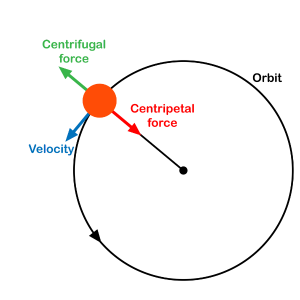Rotational force, similar and stronger to that of gravity!
As a science teacher or technician, understanding how a centrifuge works, why you need it and how to find the right model is key. Here's information to equip you with the knowledge you need...
Science Lessons: What is a Centrifuge?
- A centrifuge is used to separate solids and liquids, by forcing heavier/denser particles to the bottom of a tube.
- Over time, particles in a liquid will settle out, due to the force of gravity acting on them (like sand in a beaker
of water). However, if the particles are extremely low mass this can take many, many hours. A centrifuge is
able to apply a much larger force on these particles and thus they will settle out faster. - When objects spin around a fixed point, a force acts (traditionally this was described as an outward force:
centrifugal force) and molecules will be pulled outwards. - However centrifugal force is an artificial construct used to describe a force ‘feeling’ which is actually the result
of inertia (tendency of a mass to resist changes in its motion). - The actual force causing the movement is the centripetal force which is directed towards the centre of the circular
path, and at 90° to its velocity, with the formula:

Where:
Fc is centripetal force (N)
m is mass (kg)
v is velocity (ms-1)
r is the radius of the circle (m)
Centripetal force is described in rotational motion in A level physics.






As the fairground ride spins about a central point, the people are ‘forced’ outward (away from the centre).
In this fairground ride image, the movement in relation to the size of people is slow, which means that instability or imbalance will not pose a problem, and people can sit anywhere on the ride.
However, with the much faster speeds that you see in a centrifuge, imbalances in mass can pose a threat to the stability of the centrifuge itself.
The force acting on the smaller person is much larger than that acting on the bigger person and the smaller one is pulled out of balance.


Always balance the centrifuge
In the centrifuge:
For the forces to be balanced the masses of liquids should be near equal and placed equidistant around the central core.
Centrifuges are vital in molecular biology for separating DNA and RNA from solutions, as well as in school experiments like PCR (Polymerase Chain Reaction) and DNA fingerprinting. They are extensively used in chemical and biological research, as well as in medical diagnostics to separate the different components of blood.
So, what seems like fairly small changes in radius or speed can affect huge changes in relative force.
Because of the large forces acting on the spinning tubes it is particularly important to choose the correct bottles and tubes to use in the centrifuge, to prevent breakages inside the machine, which can lead to imbalances and a broken centrifuge.








